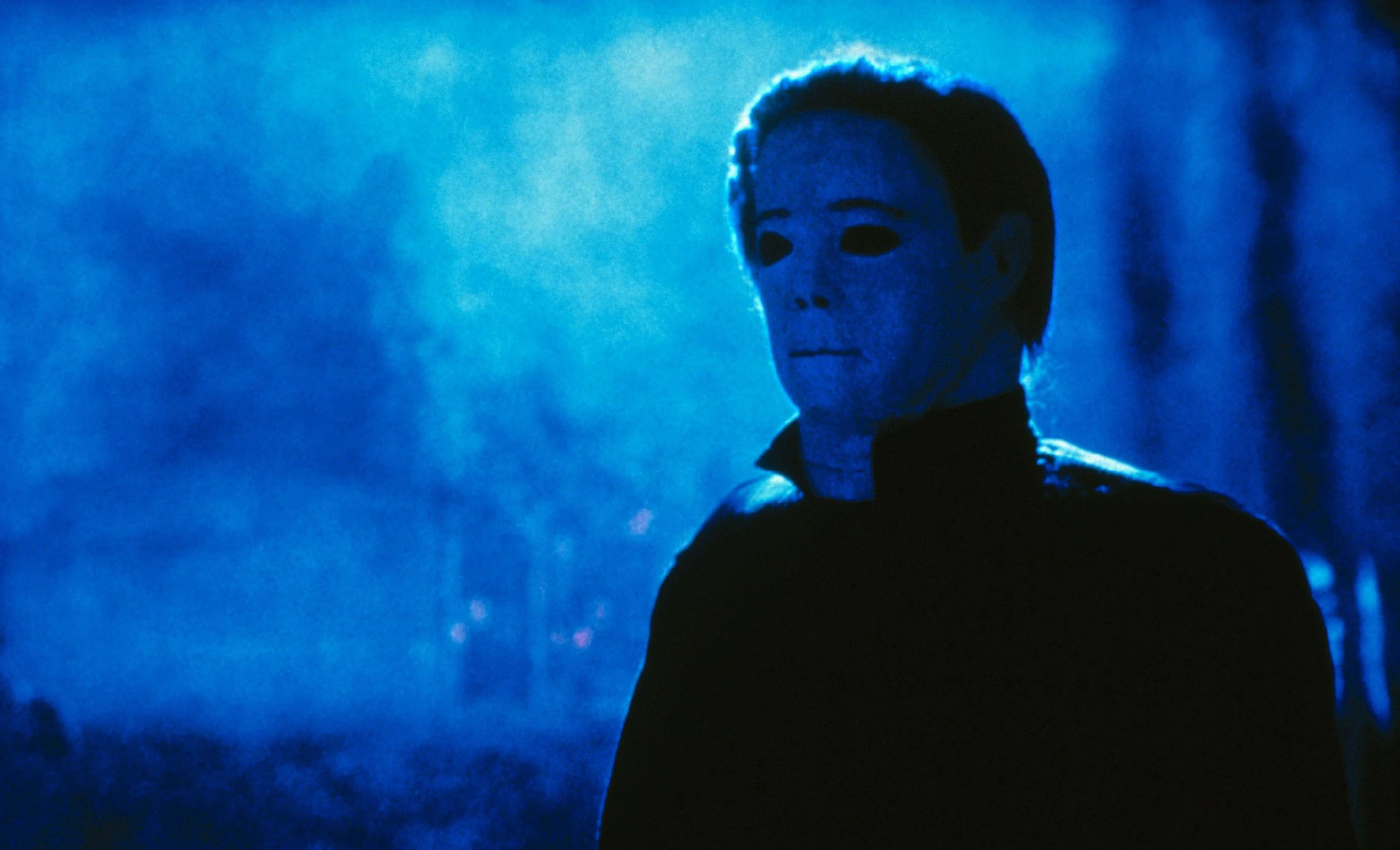
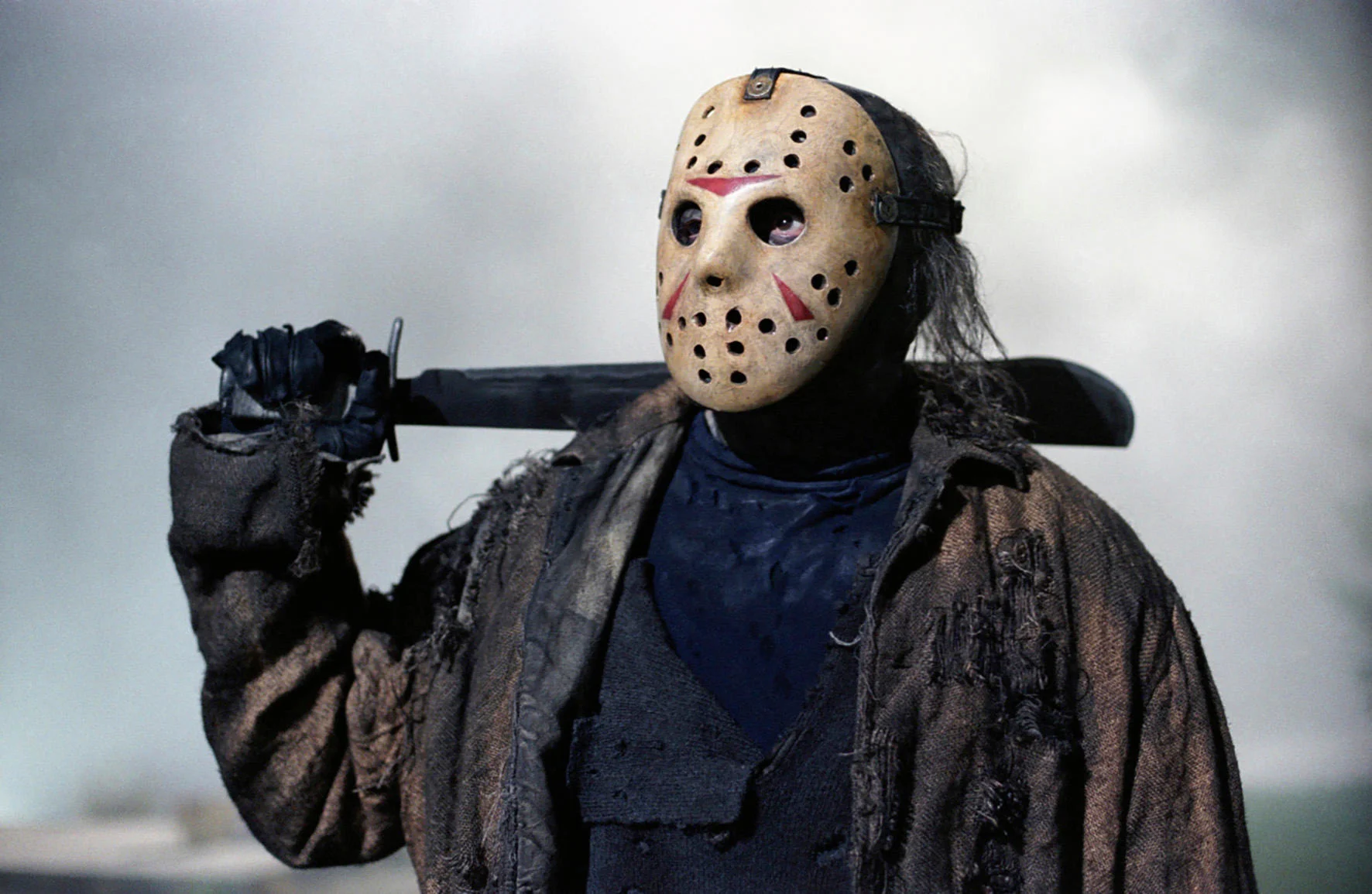
Across cultures, masks have served as ceremonial garb, theatrical costume, tokens of good fortune, and tools for intimidation. But every Halloween, as the masks of horror movie baddies take over our screens and streets, we’re reminded of their unique ability to ratchet up suspicion, tension and fear—and in the case of popular film franchises, merchandise revenue, too. Here, writer Anna Bogutskaya explores the power of the mask in modern myth-making.
One of the first things that comes to mind when we think of Halloween are the masks. Whether it’s a generic undead creature, a warty witch, a vampire, or an ultra-specific on-screen villain, masks—store-bought or crafted from masking tape and ingenuity—are an easy last-minute costume solution. Pop on a mask, and for a night, you’re someone else.
Mask-wearing is a near-universal tradition, with different cultures imbuing masks with heavy spiritual, religious or social significance. They were used in warfare, in funeral and fertility rites, and in dramatic reenactments of myths. In Japan, for example, the onimask was modeled after demons from Japanese folklore, and was worn in ceremonies and performances to ward off bad luck and harm, and the mengu (or menpu) mask was donned by samurai warriors in battle to instill fear in their opponents. And in noh theater—which has over 200 unique masks in use today—performers use movement to imbue the mask with emotion.
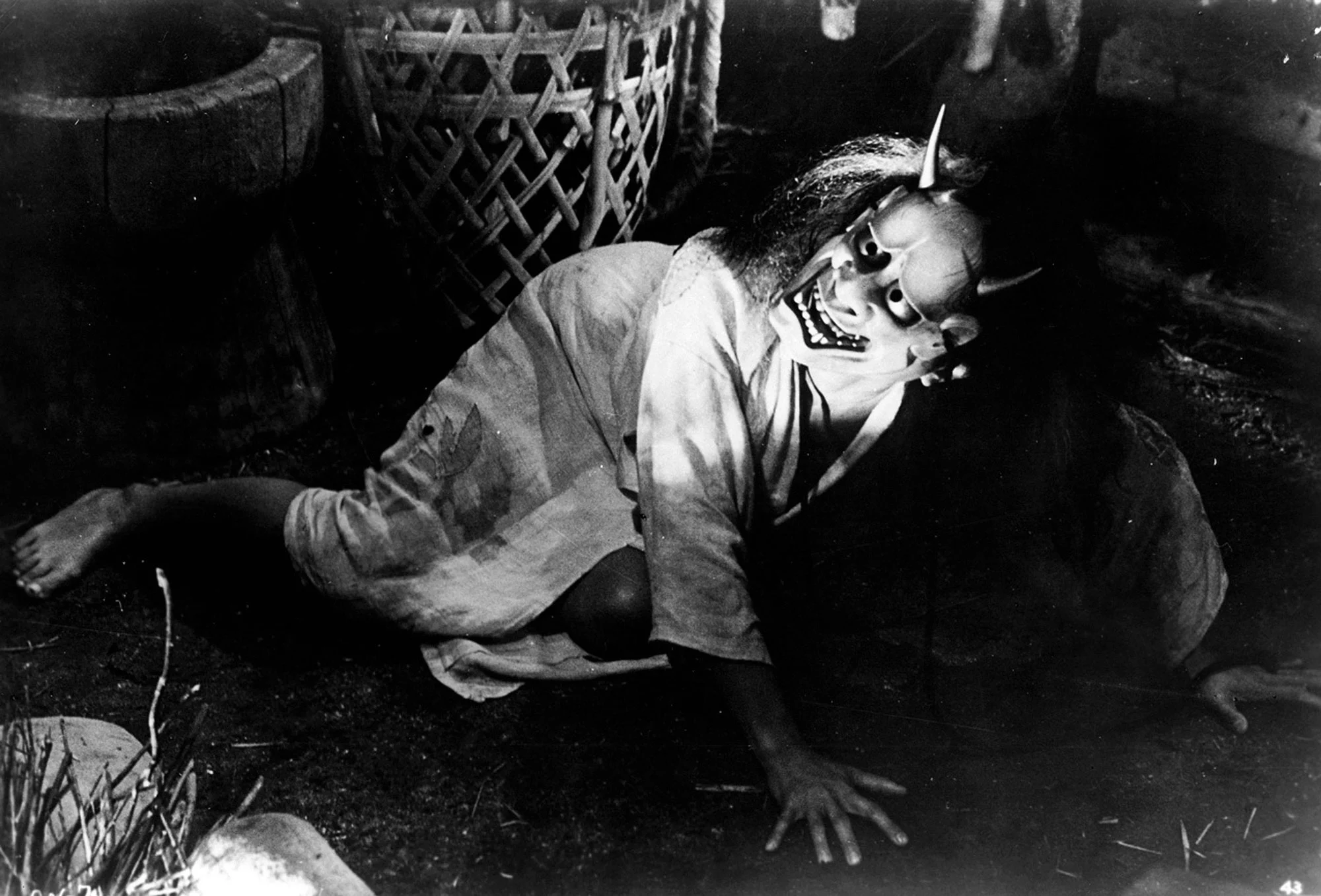
Meanwhile, on the Island of Papua New Guinea, members of a secret society by the name of Dukduk wore five-foot, cone-shaped masks when judging and punishing rule-breakers; and in Ancient Egyptian and Greek cultures, funeral masks were placed on the deceased as a sign of respect, and to establish a path for the dead to the spirit world. And to this day, among Oceanic and African peoples, rituals with masks are performed to honor spirits or ancestors.
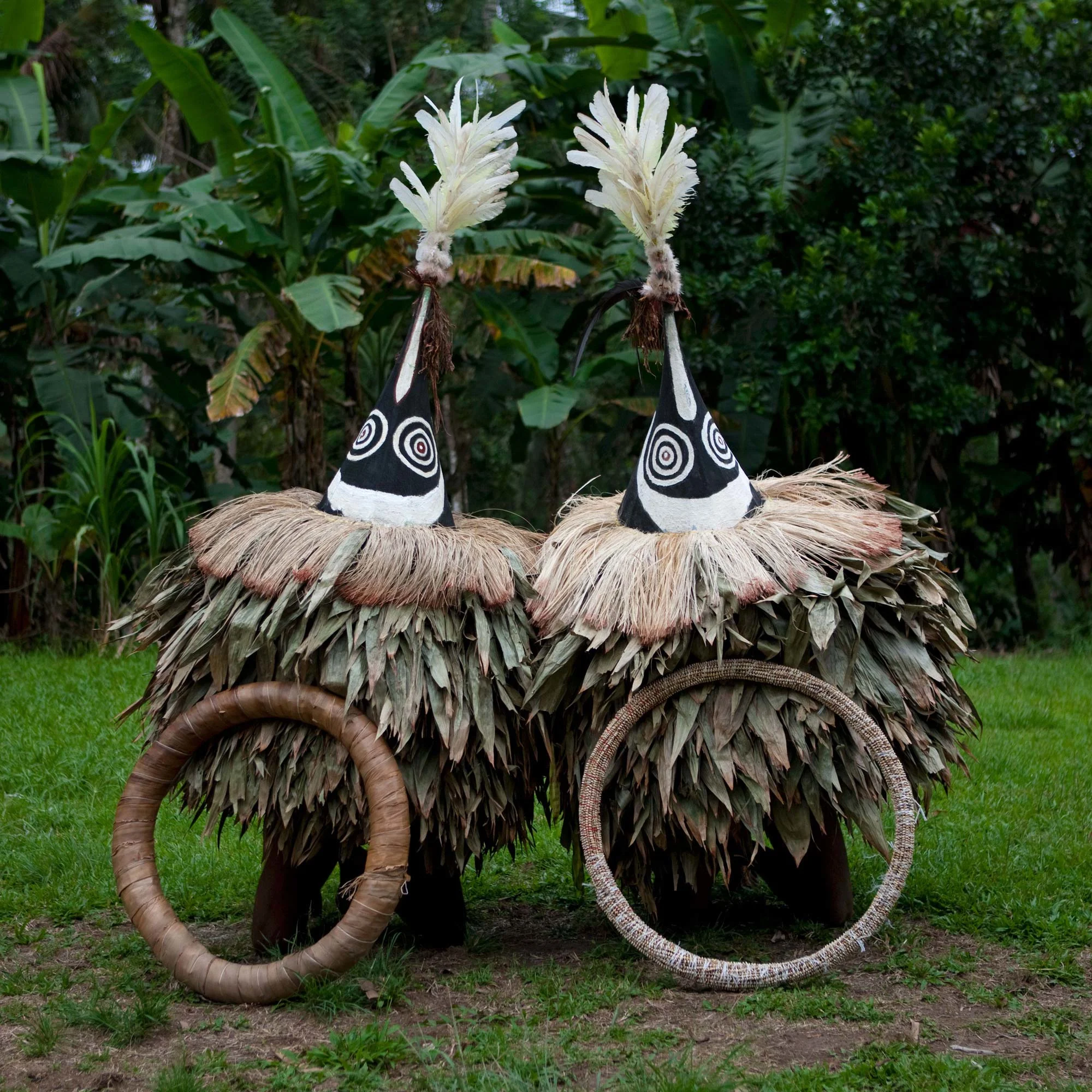
Originating from the Celtic celebration of Samhain, which marked the end of the summer and the start of a new year, Halloween as we know it has its origins in masked ritual. Although it’s now a secular event, All Hallows’ Eve is the one night a year when, according to legend, the fabric between the living and the dead is at its thinnest. Tradition dictated that you must always wear a mask to avoid being recognized by the undead roaming the Earth, hoping that nefarious ghosts would mistake you for one of them and pass you by.
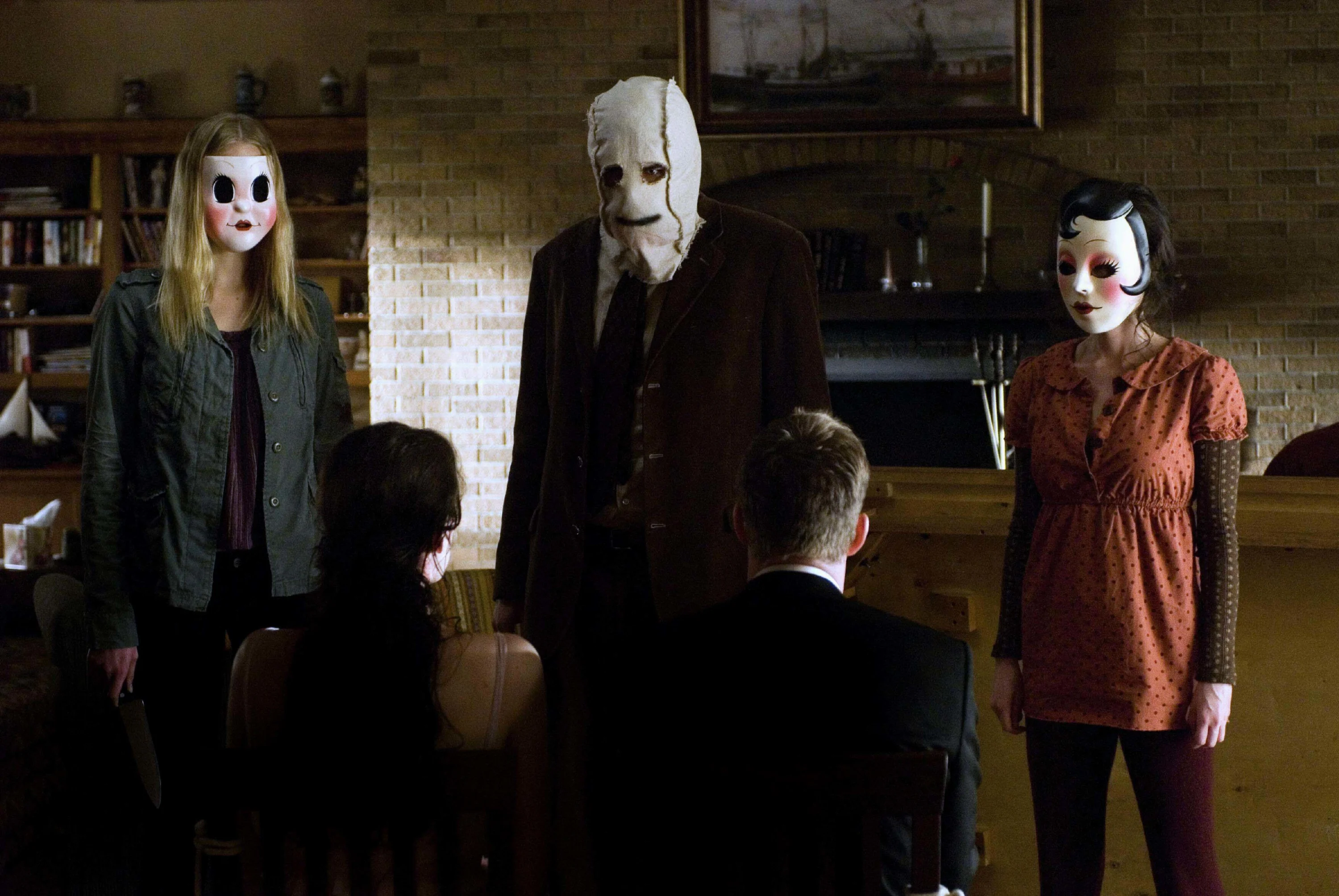
A horror fan’s devotion to a movie franchise is expressed through their tattoos, t-shirts and FunkoPop collection.
Today, masks are a constant in horror films—they are one of the most memorable (and merchandisable) ways a villain can be immortalized. For some of the most influential and imitated horror villains’ masks are a trademark—visual shorthand for their character and the franchise they represent. Think of “Halloween” antagonist Michael Myers and his blank, scraggly-haired white mask; or Leatherface, the chainsaw-wielding madman of “Texas Chainsaw Massacre,” literally wearing someone else’s face. Jason Voorhees from “Friday the 13th” has his hockey mask; the mysterious assailants in the home-invasion horror “The Strangers” have their sack-like masks; and the peanut-eyed Ghostface of the “Scream” franchise is undeniably iconic.
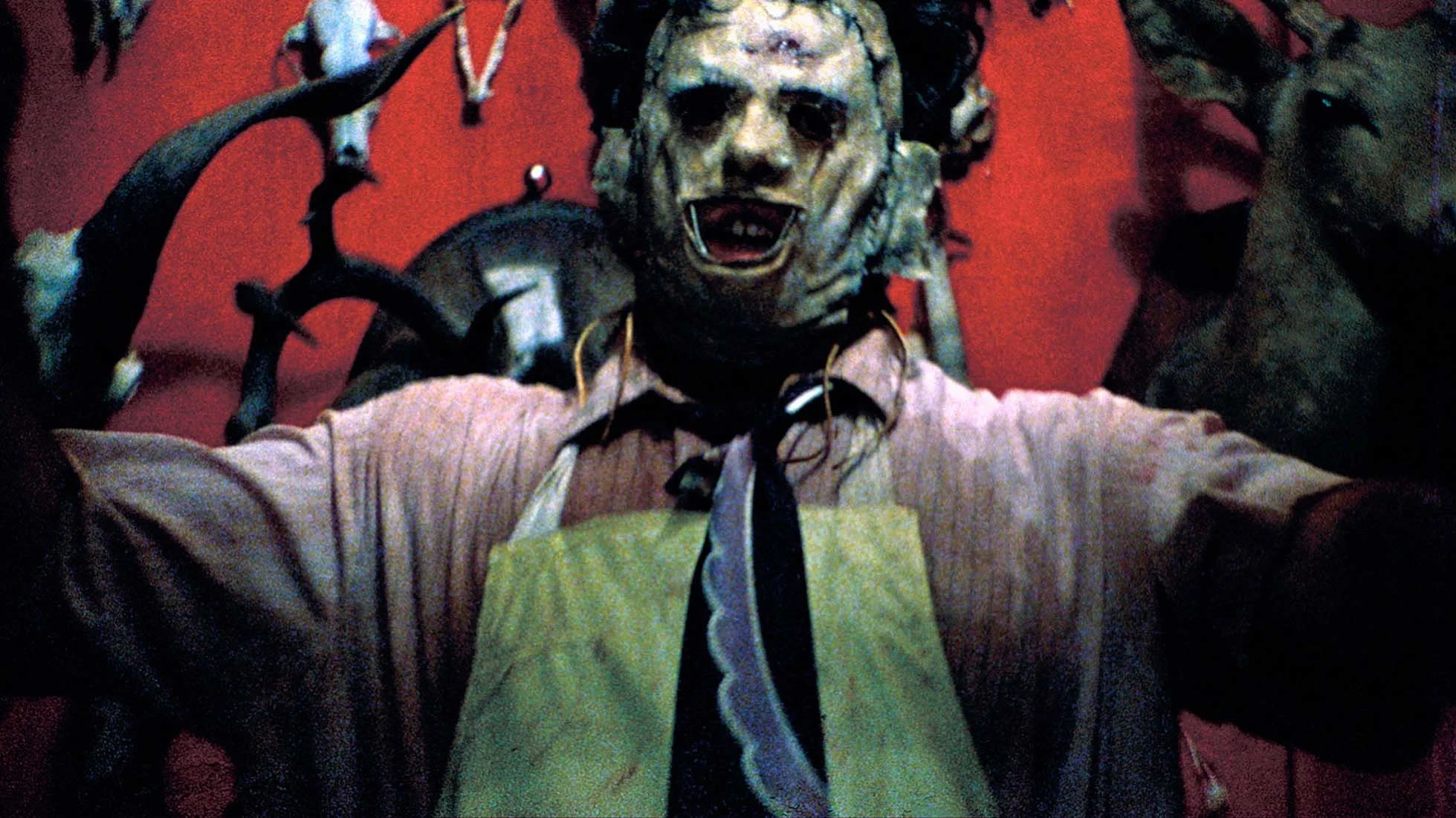
The most influential and imitated horror villains’ masks are a trademark—visual shorthand for their character and the franchise they represent.
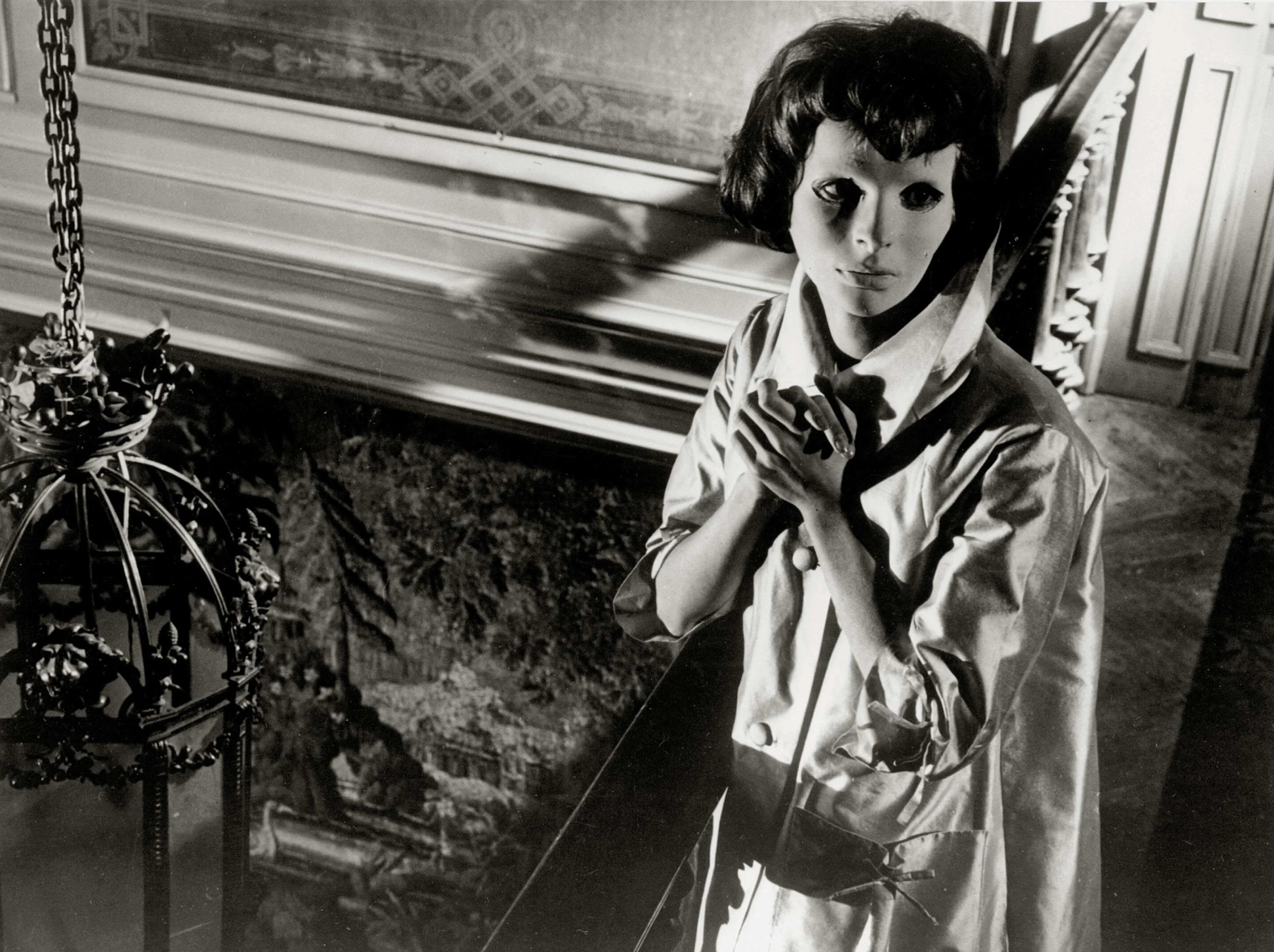
Through decades of on-screen horror, we’ve come to immediately associate masks with villainy. But some films have used this to play with our expectations of who’s well-meaning and who’s plotting, such as in J. A. Bayone’s “The Orphanage,” or the 1960 French horror classic “Eyes Without a Face.” Their unnerving masks worn on screen (a sack with a face like a child’s drawing painted on it in the former; a white recovery mask in the latter) lead us to believe their wearers are evil, though—spoiler alert—neither actually is.
“In horror cinema,” academic Alexandra Heller-Nicholas writes in her book “Masks in Horror Cinema: Eyes Without Faces,” “the presence of a masked villain implies the possibility that their identity will be revealed.” We spend the entire film waiting for the moment of unmasking, terrified of seeing what’s actually underneath.
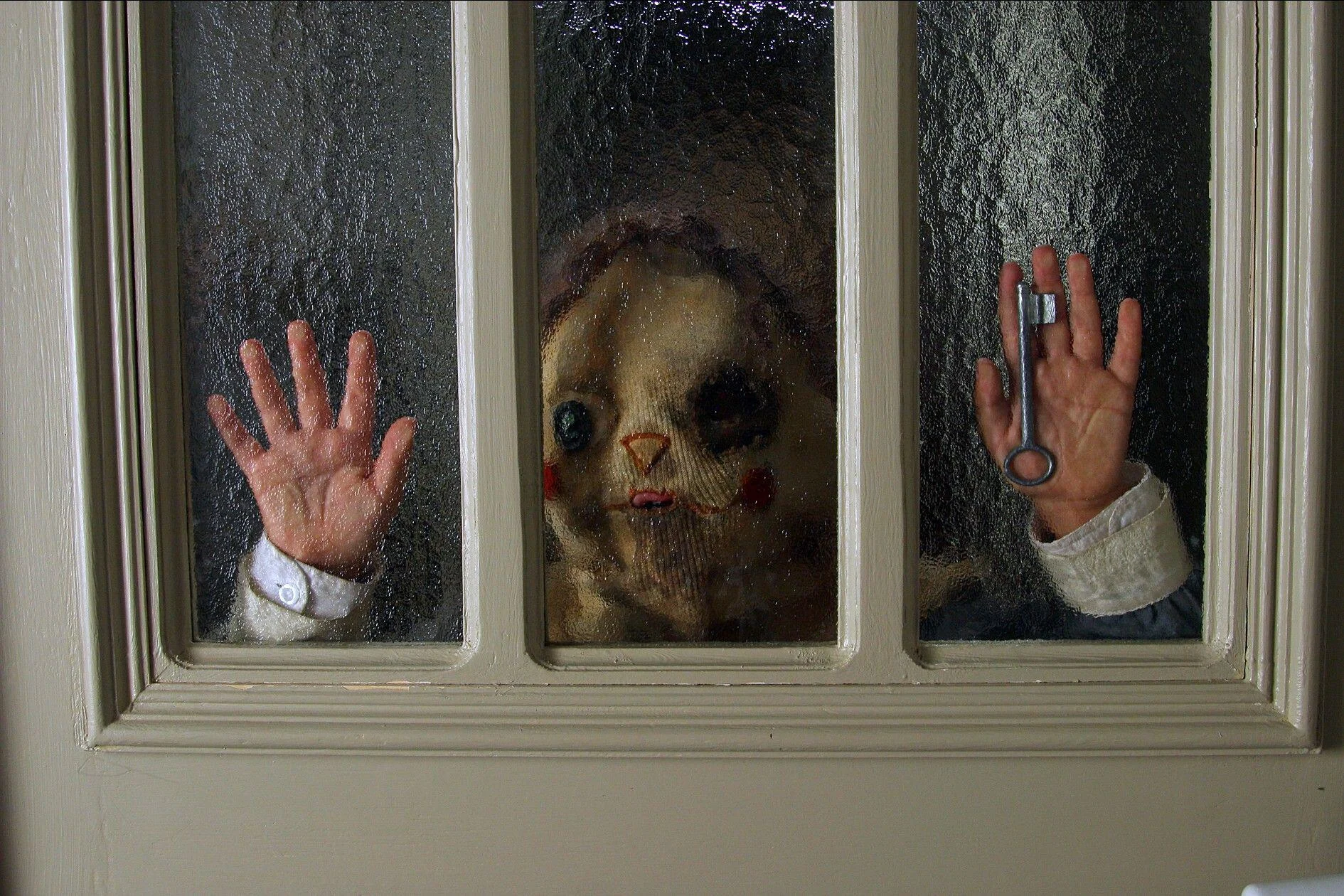
This doesn’t always apply, of course. We know exactly who the killers of the entire “Halloween” and “Friday the 13th” franchises are—Michael Myers and Jason are, in a way, the stars of the show. But while we know their names, their humanity is obscured (or nullified) by their masks.
Michael Myers’ expressionless mask was designed to match the bottomless void of evil that is the character, in the 1978 original he was simply credited as “The Shape.” Nobody knew why he was doing all the killings, and that wasthe point. (His mask, the work of production designer Tommy Lee Wallace, was actually a two-dollar Captain Kirk mask that he found and spray-painted white.)
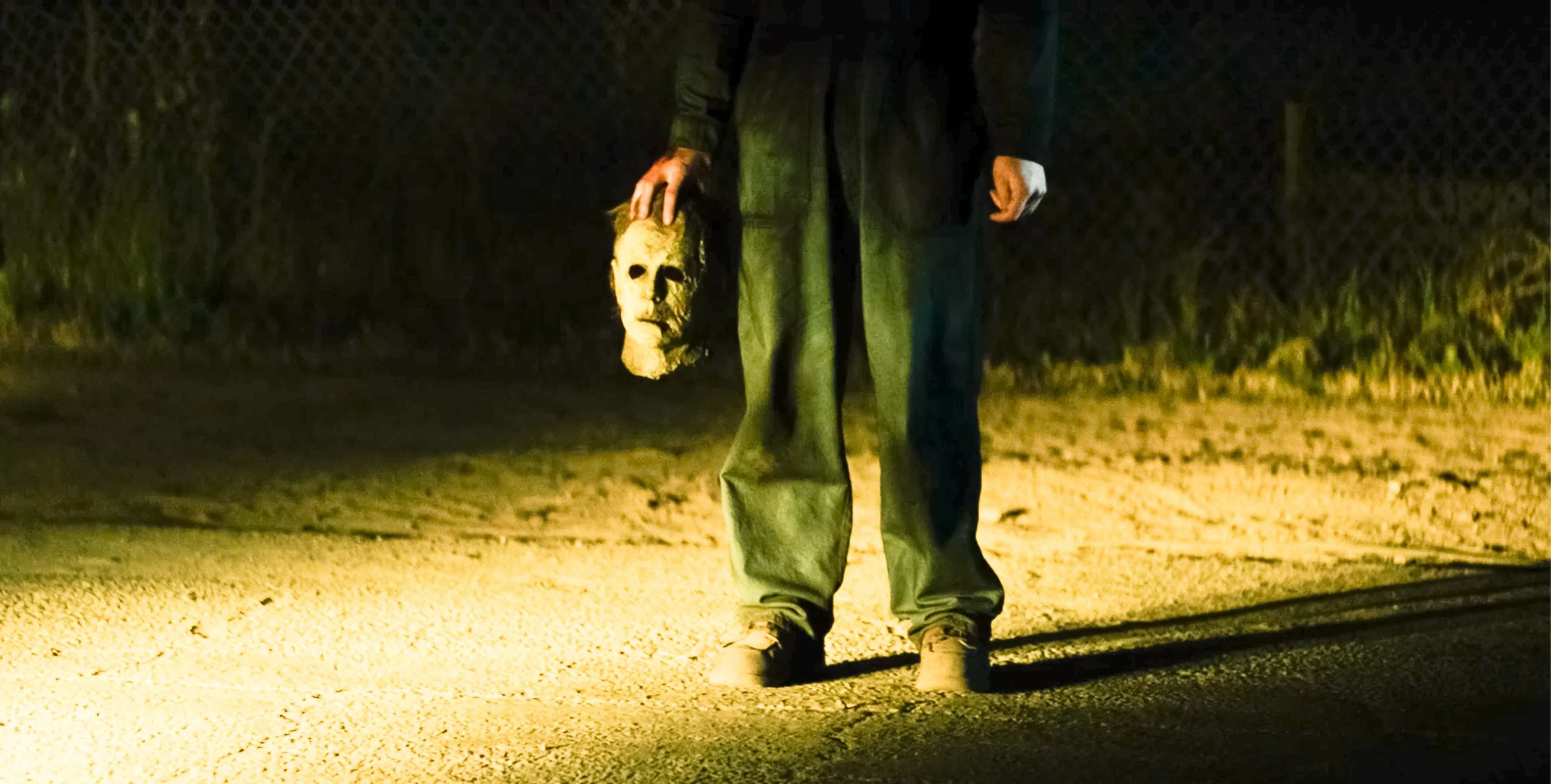
In the newest “Halloween” trilogy, directed by David Gordon Green, the passage of time is marked by the mask. This boogeyman, after all, is also human. While we never see Michael Myers’ face clearly, his mask has aged, grayish when it used to be white, covered in scratches and indentations like artificial wrinkles. Award-winning makeup effects designer Christopher Nelson, who made the villain’s new and aged mask, wanted to imbue it with a “sense of tragedy.” Together with the mask, the dark cover-alls are Michael Myers’ uniform. Costume designer Emily Gunshor worked closely with Nelson on all three films, figuring out the marriage between the mask and the costume. “It’s a lot of aging, dying and distressing,” she said over Zoom. “We’re pretty set in our technique of wet and dry blood.”
For each one of the films, from “Halloween” to “Halloween Ends,” she starts from a place of reality and makes up stories for the character. (“What has Michael Myers been doing for the past three years?”)

These masks are the closest thing to a logo a film franchise can have and are easily transformed into merchandise. Ghostface, the avatar for the multiple killers of the “Scream” franchise, was a dimestore Halloween mask before it became movie iconography. Created in the early ’90s by a costume company in time for Halloween season, it has become a perennial favorite Halloween costume in the United States, thanks to the popularity of the movies. These boogeymen, through masks, have become merchandise. A horror fan’s devotion to a movie franchise is expressed through their tattoos, t-shirts and Funko Pop collection.
In Sam Shepard’s 1972 play “The Tooth of Crime,” a character quips, “I believe in my mask—the man I made up is me.” In that spirit, these horror film villains are made by their masks. The men underneath them are almost irrelevant. When the mask is off, their power is diminished. (Throughout the 40-year “Halloween”franchise, which supposedly comes to a close this year with “Halloween Ends,” the killer has been unmasked three times, and each was sort of a let-down.)
The mask is one of the most powerful anthropological artifacts we have. The unmasking itself is hardly the point when we project something so much more meaningful onto the mask itself.
